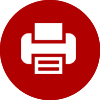WASHINGTON, October 5, 2010 —The World Bank Group is releasing a wide range of tools and technology applications to empower more collaborative and effective solutions to global challenges, as part of the institution’s commitment to "Open Development."
“We are working to make data analysis and modeling tools more user-friendly, so that researchers, civil society, and local communities can come up with their own findings – and double-check ours,” said World Bank President Robert B. Zoellick. “We need to throw open the doors, recognizing that others can find and create their own solutions.”
- The Bank is doubling the number of development indicators available in its Open Data Catalog from 2,000 to 4,000 and providing them free of charge.
- The number of indicators available with visualizations on the website data.worldbank.org, available in multiple languages, will triple to 1,200, with many new features for exploring and sharing the data.
- Geo-coded project data will be available for the first time for over 1,000 World Bank projects.
- A major upgrade to the DataFinder application for iPhone and iPad will allow users of those devices to access and visualize World Bank data.
- A new data visualization tool, AidFlows, soon to be launched, will provide country-by-country data on aid flows, from donors to beneficiaries. For the first time, global totals and World Bank details will be presented together through this joint OECD-Bank effort.
“Imagine this: A health care worker or parent in a village, with a laptop or mobile device, can access development knowledge in real time through geo-coding and mapping,” said Zoellick. “She can upload her own data, throw light on the likely effect of new interventions, and mobilize the community to demand better or more targeted health programs.”
In a speech on September 29, at Georgetown University, Zoellick described the new Open Data, Open Knowledge, and Open Solutions Initiative. “This needs to be more than just a slogan. This needs to be a fundamentally new way of searching for development solutions, in a networked development architecture, where none dominates and all can play a part.”
Collaborations with commercial information providers Google and Microsoft, to be announced this week, will also broaden access to the Bank’s development data, said Shaida Badiee, Director of the Development Economics Data Group.
“The new data tools and website improvements will make it easier for researchers and software developers to obtain, visualize and analyze data,” said Ms. Badiee. “This is about putting the ‘what’ and ‘how’ of development into people’s hands.”
The Bank is calling on others to join the quest for innovative development solutions by holding the first-ever global competition to develop new software applications using the newly open data. The Apps for Development Competition officially launches October 7. (For more, visit data.worldbank.org/appsfordevelopment.)
Mapping for Results, an interactive platform set to launch as a pilot later this month, overlays poverty and Millennium Development Goal data, such as infant mortality rates, with the geographic location of over a 1,000 World Bank-financed projects.
The new applications are complemented by a series of software tools available on a new Open Development website (www.worldbank.org/open) which will allow researchers, government officials and citizens to crunch their own numbers.
· ADePT for economic analysis of survey data
· PovCalNet for estimating poverty incidence rates
· NADA for archiving and cataloguing household surveys
· iSimulate for designing forecasts and simulations
· WITS for accessing trade data and analyzing trade barriers
WITS, for example, will enable a producer anywhere in the world with a laptop, an internet connection and an agricultural or manufactured product, to identify the trade barriers he or she will face in export markets all around the world.
The Bank’s open data initiative is part of a wider effort to increase transparency and access to information. In July, the World Bank introduced a new Access to Information Policy, modeled on the US and Indian Freedom of information laws.
For more information, please visit www.worldbank.org/open











